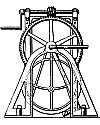
In 1856, English inventor, Henry Bessemer was issued a US Patent for his steel-making process. He also held an earlier British patent for his “decarbonization process, utilizing a blast of air” that revolutionised steel manufacturing. However, the U.S. patent was shortly challenged in a dispute over priority. The American William Kelly—though filing after Bessemer—was recognized as the first to actually use a blast of air into molten pig iron to make steel.
An article in Scientific American (1857) gave the English Opinion of the United States Patent Office Management for what was regarded as an injustice for failing to protect Bessemer, who had a fully practical industrial process, and was clearly the first to file. The editor of the Scientific American made clear he held no sympathy for Bessemer in the matter. Thus, the “first to invent” legal concept was upheld, not the “first to file” (FTF).
The U.S. finally joined the rest of the world to give priority to FTF, only as recently as 16 Sep 2011, when President Barack Obama signed the Leahy-Smith America Invents Act (AIA). The FTF provision came in to effect on 16 Mar 2013. That was over a century and a half too late to help Henry Bessemer's claim. You can read the clash of opinions expressed back then in the Scientific American article.

On 11 Nov 1938, Mary Mallon died, notoriously known as Typhoid Mary, carrier of deadly typhoid affecting many people while she remained immune, she transmitted the disease an others died. Today's book pick is: Typhoid Mary: Captive to the Public's Health, by Judith Walzer Leavitt. This is a fascinating story of early 20th century epidemiology, her tragic personal story and finally her quarantine for life under new public health laws. Leavitt's readable account illuminates dilemmas that continue to haunt us.
Combining social history with biography, historian Judith Leavitt re-creates early-twentieth-century New York City, a world of strict class divisions and prejudice against immigrants and women. Leavitt engages the reader with the excitement of the early days of microbiology and brings to life the conflicting perspectives of journalists, public health officials, the law, and Mary Mallon herself.
To what degree are we willing to sacrifice individual liberty to protect the public's health? How far should we go in the age of AIDS, drug-resistant tuberculosis, and other diseases? For anyone who is concerned about the threats and quandaries posed by new epidemics, Typhoid Mary is a vivid reminder of the human side of disease and disease control.
It is available from Amazon, typically about New from $18.12. Used from $3.89. (As of earlier time of writing - subject to change.)
 | Each person is an idiom unto himself, an apparent violation of the syntax of the species. |
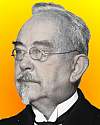 | The science of genetics is in a transition period, becoming an exact science just as the chemistry in the times of Lavoisier, who made the balance an indispensable implement in chemical research. |
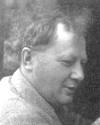 | The British Mathematical Colloquium consists of three days of mathematics with no dogs and no wives. |
| Before you look at today's web page, see if you can answer some of these questions about the events that happened on this day. Some of the names are very familiar. Others will likely stump you. Tickle your curiosity with these questions, then check your answers on today's web page. | |
| Births | |
 | Vesto Melvin Slipher, born 11 Nov 1875, was an astronomer whose systematic observations (1912-25) of the extraordinary radial velocities of spiral galaxies provided the first evidence supporting the expanding-universe theory. Slipher spectroscopically measured the displacement of their spectral lines by the Doppler effect by which the wavelength of light from an object moving away from an observer will shifted toward the red end of the spectrum. What was his nationality? |
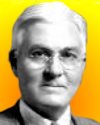 | George Washington Crile, born 11 Nov 1864, was an American surgeon who studied surgical shock, and recognized the important of monitoring blood pressure in surgical patients. He helped popularize the use of a familiar device for that purpose. What is the name of a device used to measure blood pressure? |
| Deaths | |
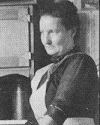 | Mary Mallon (1870-1938) was a famous disease carrier in the early 20th century. Fifty-one original cases of the disease and three deaths were directly attributed to her (countless more were indirectly attributed), although she herself was immune to the infectious bacillus. In the area of which city did she spread this disease? |
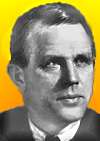 | Artturi Ilmari Virtanen (1895-1973) was a biochemist who was awarded the 1945 Nobel Prize in Chemistry for the AIV method for storing green animal fodder, by using an acid medium (about pH 4) to prevent spoilage. When fed on this silage, cows provided milk indistinguishable in taste from that of cows fed on normal fodder, while as rich in vitamins A and C. Thus he solved the vital need for regions characterized by long, severe winters. What was his nationality? |
| Events | |
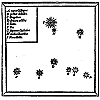 | On 11 Nov 1572, the Danish astronomer Tycho Brahe first observed a brilliant “new star,” (now called B Cassiopeiae, one of the few such objects recorded in the Milky Way Galaxy). From his precise measurements Brahe showed that it was not merely a nearby object, such as a comet, but was in fact at the great distance of the stars. Thus, he demonstrated that the stars were not unchangeable, and that real changes could indeed occur among them. What type of star had he observed? |
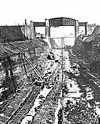 | On 11 Nov 1887, construction began on the Manchester Ship Canal in north-west England, a 40-mile waterway to enable Manchester to be an inland port for ocean-going ships. To which coastal port city was the Manchester Ship Canal linked? |
Fast answers for the previous newsletter for November 10: iron • Proxima Centauri • dinosaurs • Cambodia • a leather belt • decade containing the year 1974.
 If you enjoy this newsletter, the website, or wish to offer encouragement or ideas, please send feedback by using your mail reader Reply button.
If you enjoy this newsletter, the website, or wish to offer encouragement or ideas, please send feedback by using your mail reader Reply button. Your click on a Facebook, StumbleUpon, or other social button on the site webpages is also a welcome sign of appreciation. Thank you for using them.
© This newsletter is copyright 2020 by todayinsci.com. Please respect the Webmaster's wishes and do not put copies online of the Newsletter — or any Today in Science History webpage. (If you already have done so, please remove them. Thank you.) Offline use in education is encouraged such as a printout on a bulletin board, or projected for classroom viewing. Online, descriptive links to our pages are welcomed, as these will provide a reader with the most recent revisions, additions and/or corrections of a webpage. For any other copyright questions, please contact the Webmaster by using your mail reader Reply button.
--
If you do not want to receive any more newsletters, Unsubscribe
To update your preferences and to unsubscribe visit this link
Executive Real Estate Business Class
-
"It was like a man with wings. It wasn't like anything you'd see on TV or in a monster movie." ...
About the publisher
Search This Blog
Blog Archive
-
▼
2020
(1542)
-
▼
November
(164)
- Last day to save! Take advantage of Black Friday d...
- On This Day for November 30 - Independence of Barb...
- Newsletter for Monday 30 November.
- November 30: Cnut the Great, the 1st State to Abol...
- FAMILY: Happiness in a stressful season
- Medieval monarchs | WW1 quiz | Marlborough pie recipe
- On This Day for November 29 - United Nations resol...
- Newsletter for Sunday 29 November.
- November 29: Edison's Phonograph, Schrödinger's Ca...
- The Compass: Italy
- See the past through a different lens with Nat Geo...
- On This Day for November 28 - Opening of Tehrān Co...
- Newsletter for Saturday 28 November.
- November 28: Exploration, Invention and a Day of F...
- PHOTOGRAPHY: How adversity inspired discovery for ...
- The gift of curiosity lasts a lifetime. Give Nat G...
- Very Weird — And Very Real — Facts About The Victo...
- Black Friday Deals: Save 50% on a Britannica Membe...
- Black Friday Savings at the HISTORY Store
- On This Day for November 27 - Nobel Prizes establi...
- Newsletter for Friday 27 November.
- November 27: The Model Parliament, the 1st Native ...
- ANIMALS: The pets I’m thankful for
- A Very Special Thanksgiving Edition Of Our Newsletter
- On This Day for November 26 - Premiere of Casablan...
- Newsletter for Thursday 26 November.
- YOUR WEEKLY ESCAPE: They live in a legendary under...
- November 26: 1st National Thanksgiving, Alice in W...
- SCIENCE: The prehistoric truth about turkeys
- UPDATED: Every Membership Now 50% Off!
- Every Membership Now 50% Off!
- Demystified: Is the Ozone Layer Finally Healing It...
- On This Day for November 25 - Japanese military ba...
- Newsletter for Wednesday 25 November.
- November 25: Dynamite and The Mousetrap
- TRAVEL: Keeping your family safe over the holidays
- Meet The Real-Life "Dexter" — Serial Killer Of Mur...
- On This Day for November 24 - Dutch discovery of T...
- Newsletter for Tuesday 24 November.
- November 24: 1st Transit of Venus Observed, Van Di...
- HISTORY: The faces of COVID-19’s toll
- New This Week on History News Network
- On This Day for November 23 - Ley Juárez passed, I...
- Newsletter for Monday 23 November.
- November 23: On This Day in History
- FAMILY: Keeping the holidays familiar for your kids
- The many faces of Anne Boleyn | Take our Tudors qu...
- On This Day for November 22 - U.S. President John ...
- Newsletter for Sunday 22 November.
- November 22: Vasco da Gama Rounds the Cape and JFK...
- The Compass: Hawaii
- On This Day for November 21 - Signing of Mayflower...
- Newsletter for Saturday 21 November.
- November 21: The Mayflower Compact, a Jewish state...
- CORONAVIRUS UPDATE: 200,000 new cases in a single day
- PHOTOGRAPHY: Switching tactics to chronicle the wo...
- How The Kennedy Curse Has Tormented America's Firs...
- On This Day for November 20 - Mexican Revolution l...
- The Roundup Top Ten for November 20, 2020
- Newsletter for Friday 20 November.
- November 20: Uyghurs Conquer China, the Napoleonic...
- ANIMALS: The deadly thing about snakes
- Give your kids a love of learning with Nat Geo Kid...
- #1 Gift for Families this Holiday - On Sale Now!
- On This Day for November 19 - Anwar Sadat's visit ...
- Newsletter for Thursday 19 November.
- November 19: "Four Score and Seven Years Ago..."
- YOUR WEEKLY ESCAPE: Not all of the dinosaurs died
- SCIENCE: Can we make North America’s greatest reso...
- The Latest News from History News Network
- On This Day for November 18 - Jonestown massacre, ...
- Newsletter for Wednesday 18 November.
- November 18: St. Peter's Basilica is Consecrated a...
- TRAVEL: Best of the World 2021
- Black Friday Early Access! 50% off Holiday Bundles...
- Photographer Captures the Impacts of Climate Chang...
- On This Day for November 17 - Arnold Schwarzenegge...
- Newsletter for Tuesday 17 November.
- November 17: On This Day in History
- HISTORY: Thanksgiving in tough times
- New This Week on History News Network
- On This Day for November 16 - Election of Bhutto a...
- Newsletter for Monday 16 November.
- November 16: Francisco Pizarro Ambushes Atahualpa,...
- FAMILY: Keeping kids kind during this stressful time
- The Crown S4 | Henry VIII's seventh wife | Vikings...
- On This Day for November 15 - Palestinian statehoo...
- Newsletter for Sunday 15 November.
- November 15: The Scramble for Africa and the Vietn...
- The Compass: Peru
- On This Day for November 14 - Eritrea made a provi...
- Newsletter for Saturday 14 November.
- CORONAVIRUS UPDATE: The U.S. enters uncharted terr...
- November 14: Kirch's Comet, Einstein's Theory of L...
- PHOTOGRAPHY: In the land of Arctic dreams
- The Unhinged Soldier Who Avenged Lincoln's Assassi...
- The Roundup Top Ten for November 13, 2020
- On This Day for November 13 - Terrorist attacks in...
- Newsletter for Friday 13 November.
- ANIMALS: Images to surprise and delight during thi...
-
▼
November
(164)
-
Blogroll
-
About
HistoryFact










0 comments:
Post a Comment